Health
‘COVID paralyzed my diaphragm’: Marathon runner shares how the infection took his breath away
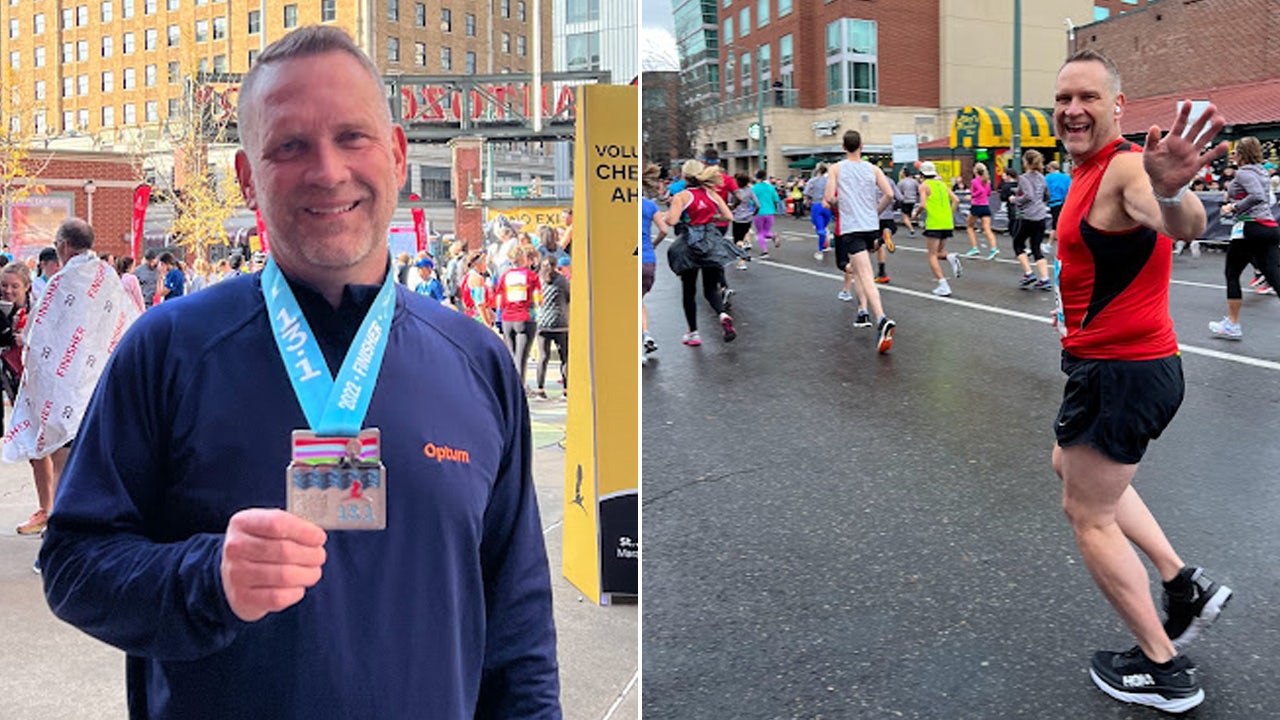
Someone with COVID-19 might expect to experience fatigue, cold and flu symptoms, and loss of taste and smell — but a paralyzed diaphragm would likely not be on the radar.
It was certainly a surprise to Gerald Branim, 55, a runner from Tennessee. His life took a drastic turn when COVID-19 damaged his lungs and diaphragm to the extent that he was unable to run or walk for a year.
Branim and his doctor, Matthew Kaufman of the Institute of Advanced Reconstruction in New Jersey, joined Fox News Digital in an interview to discuss Branim’s ordeal and recovery.
LARGEST-EVER COVID VACCINE STUDY LINKS SHOT TO SMALL INCREASE IN HEART AND BRAIN CONDITIONS
When Branim got COVID in Feb. 2021, he was a fit, healthy 52-year-old who ran marathons.
In spite of that, the infection caused significant lung damage. He spent two weeks in the hospital and three months out of work.
Gerald Branim, 55, was a marathon runner when he got COVID, which led to a paralyzed diaphragm that stopped him in his tracks. (Institute for Advanced Reconstruction)
For two months after leaving the hospital, Branim used a walker as he continued struggling with lung complications.
“For someone who had run marathons, it was quite humbling to have to walk with a walker for three months,” he said.
After rounds of high-dose steroids and lots of antibiotics, Branim’s chest X-rays finally showed that his lungs had cleared — but he was still having trouble functioning.
LONG COVID IS HIGHEST IN THESE STATES, SAYS NEW CDC REPORT
“I still couldn’t go upstairs without my oxygen dropping severely,” he recalled. “I couldn’t run 100 yards without my oxygen dropping into dangerous levels. I was severely out of breath.”
“That’s when they started saying something else was going on — that this shouldn’t be happening.”
“I couldn’t run 100 yards without my oxygen dropping into dangerous levels. I was severely out of breath.”
After 10 months of not being able to walk or run, Branim’s condition was finally diagnosed via a “sniff test,” which is also called a chest fluoroscopy or a video chest X-ray, where the patient is asked to breathe in and out.
Any paralysis will show up on the scan, as the diaphragm won’t move upon breathing.
What to know about diaphragm paralysis
Diaphragm paralysis — which is a “pretty rare condition,” according to Kaufman, Branim’s doctor — is paralysis of the diaphragm muscle, which is the primary breathing muscle.
Previous studies have estimated that the condition affects only about 1.31% of the population. In about 95% of cases, only one side is paralyzed, the doctor noted.
“We have two diaphragms, one on the right, one on the left,” he said.

Branim, far right, is pictured with his doctor, Matthew Kaufman, center, and another patient at the half-marathon they ran together after Branim’s surgery. (Institute for Advanced Reconstruction)
In cases where both sides are paralyzed, symptoms will be much more severe, usually requiring the patient to be put on oxygen.
“It’s become sort of a phenomenon,” Kaufman told Fox News Digital. “The phrenic nerve, which is the nerve that controls the diaphragm, seems to be an area where the COVID virus can have an impact.”
In some ways, he said, the condition can be considered part of long COVID, which is when symptoms of the virus linger for weeks, months or even years after infection.
SHOULD THE CDC DROP ITS 5-DAY COVID ISOLATION GUIDELINES? DOCTORS WEIGH IN
Most people with diaphragm paralysis won’t have difficulty breathing while sitting. Symptoms will typically emerge with exertion, such as walking or exercising, or when changing positions, such as lying flat in bed or bending over to tie their shoes, Kaufman said.
Some people are more susceptible than others, the doctor noted.
“We know that viruses tend to attack nerves in the body, as we’ve seen in Bell’s palsy,” he said. “And now we’re seeing it with COVID causing injury to the phrenic nerve.”
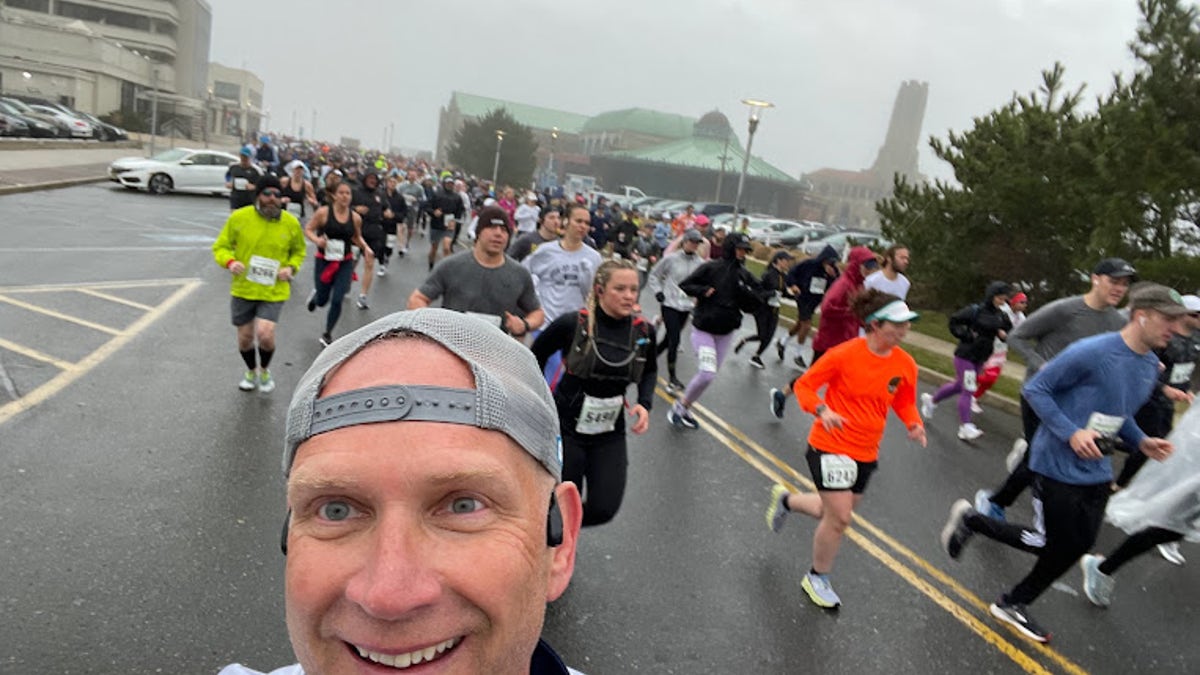
Branim set a goal of running a half-marathon within a year of his surgery date, which he achieved alongside his doctor in April 2023. (Institute for Advanced Reconstruction)
Because the condition is rare to begin with, he said, it’s not something that’s universally known.
“And then you take a condition like COVID, which causes respiratory symptoms from inflammation in the airways and lungs, and then you tie in what we consider to be a neuromuscular problem,” Kaufman said.
“A lot of times, the physician or patient will attribute it to airway inflammation, when in fact it’s a problem related to nerves and muscles that are part of the respiratory system.”
ASK A DOC: ‘WHEN IS A COUGH SOMETHING TO WORRY ABOUT?’
In some cases, patients will recover on their own, Kaufman said.
“We usually recommend a period of about six to 12 months of physical therapy, breathing exercises and cardiovascular fitness to try to see if this will come back on its own,” he said.
If improvement is not noticed in that time frame, surgical intervention becomes a possibility.
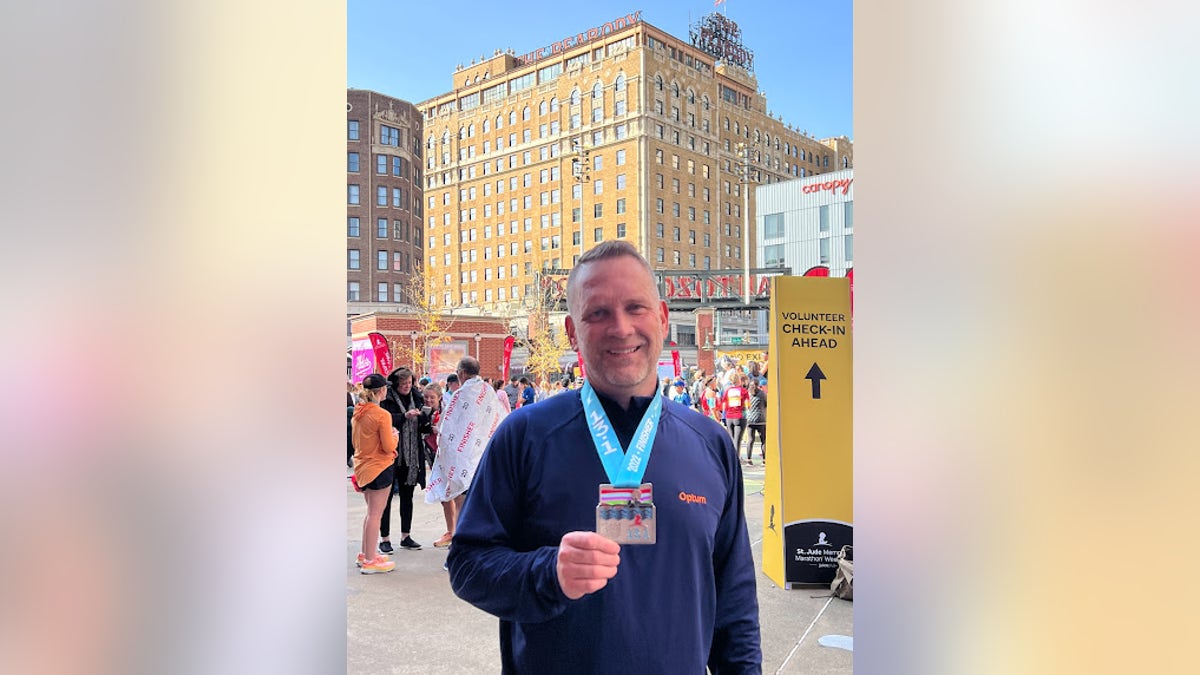
Branim emphasized the importance of patients serving as their own advocates. “Doctors are human — they don’t know everything,” he said. “So you have to advocate for yourself.” (Institute for Advanced Reconstruction)
In 2020 and 2021, Kaufman said he saw an uptick of patients who experienced diaphragm paralysis after having COVID. Although he is still seeing some cases, they are starting to trail off a bit.
“That could be because the classic COVID is not as virulent or severe,” he said. “Or maybe it’s because more people are immunized.”
Although the condition is generally not life-threatening, it can be more severe in patients who have existing respiratory conditions.
Racing toward recovery
After Branim’s diagnosis, his lung doctor advised him to continue to give it time to heal.
“But it wasn’t getting any better,” he said. “And I just wasn’t satisfied with that being my new quality of life.”
‘WELLNESS SHOTS’ AT HOME CAN HELP YOU BEAT THE COLD THAT’S HAMPERING YOU: TRY THE RECIPE
That’s when Branim turned to Google to research surgical options. He came across an article by Kaufman, a plastic and reconstructive surgeon who specializes in an area called peripheral nerve microsurgery.
Kaufman specializes in conditions that cause either pain or paralysis due to nerve damage of the peripheral nervous system.
After meeting with Kaufman in a telehealth visit, Branim was identified as a prime candidate for the surgery, which is called phrenic nerve reconstruction.
“It wasn’t getting any better — and I just wasn’t satisfied with that being my new quality of life.”
If he had waited much longer, he said, his diaphragm muscle would have atrophied and the surgery would no longer have been possible.
After a lot of back and forth with the insurance company, Branim finally got the green light to travel from Nashville to New Jersey for the procedure.
The surgery went smoothly, although Branim was told that it wouldn’t be an immediate improvement. Once the nerve is fixed, the muscle still needs time to strengthen and rehabilitate.

Studies have estimated that the condition affects only about 1.31% of the population. In about 95% of cases, only one side is paralyzed. (Institute for Advanced Reconstruction)
“Dr. Kaufman told me that it would probably take a year or two to recover fully, and was preaching patience — but I’m not a patient man in the slightest sense of the word,” Branim laughed.
He set a goal of running a half-marathon within a year of his surgery date.
After four weeks, Branim slowly began exercising again. After six months, he decided to lace up his running shoes and give it a try.
“My very first run after the surgery, I ran five miles,” he said. “I literally cried. At that point, it was like a light switch had been flipped.”
MASK MANDATES RETURN TO HOSPITALS IN NYC, SEVERAL OTHER STATES AMID RISE IN COVID, FLU CASES
Within six months, Branim had not only regained his ability to run, but exceeded his original goals, culminating in a half-marathon in April 2023.
In a triumphant twist, Kaufman, who is also a runner, joined his patient in completing the race in Asbury Park, New Jersey.
Now, Branim aims to raise awareness about diaphragm paralysis, an often-overlooked condition that is not on most doctors’ or patients’ radars.
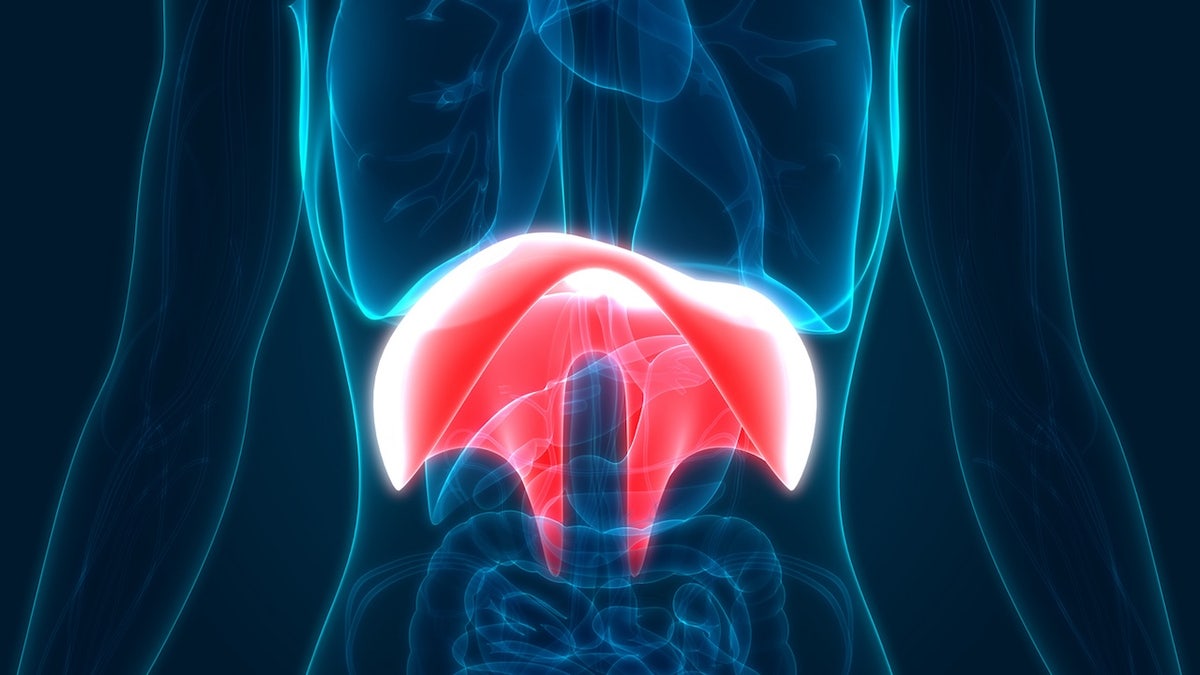
Previous studies have estimated that the condition affects only about 1.31% of the population. In about 95% of cases, only one side is paralyzed. (iStock)
“None of my doctors had even heard of this surgery,” he said. “Had I not found the article about Dr. Kaufman and another runner online, I would have never been able to have the surgery — and I would absolutely not be running today.”
Branim emphasized the importance of patients serving as their own advocates.
CLICK HERE TO SIGN UP FOR OUR HEALTH NEWSLETTER
“Doctors are human — they don’t know everything,” he said. “So you have to advocate for yourself.”
For patients who are experiencing shortness of breath with exertion that persists for several months, Kaufman recommends visiting a primary care physician or pulmonary physician to get the necessary testing.
“While most tests will find more common ailments, it definitely makes sense to keep a paralyzed diaphragm on the list of things to rule out.”
For more Health articles, visit www.foxnews/health.

Health
What Happens If You Eat Eggs Every Day? Nutritionists Share the Benefits

Sign Up
Create a free account to access exclusive content, play games, solve puzzles, test your pop-culture knowledge and receive special offers.
Already have an account? Login
Forgot your password?
Get back to the Sign In
Use left and right arrow keys to navigate between menu items.
Use escape to exit the menu.
Health
Ask a doctor: ‘I swallowed a bug — now what should I do?'

Most people have experienced that moment of discomfort when they realize a bug has wound up where it shouldn’t be — in their windpipe.
That includes Taylor Swift, who on more than one occasion has accidentally swallowed a bug while performing on stage in front of thousands of people.
It can be a startling and somewhat disgusting occurrence — but is this dangerous, or just a nuisance?
LOCAL DENGUE FEVER CASES CONFIRMED IN FLORIDA KEYS, SPREAD BY MOSQUITO BITES
Dr. Raj Dasgupta, a quadruple board-certified physician in California, shared with Fox News Digital the true impacts of accidentally swallowing a bug, and the best thing to do if it happens.
“Swallowing a bug can often happen accidentally when you’re eating or drinking outside, or if a bug flies into your mouth,” Dasgupta, who serves as chief medical advisor for Fortune Recommends, told Fox News Digital via email.
Dr. Raj Dasgupta, a quadruple board-certified physician in California, discussed the impact of accidentally swallowing a bug — and the best thing to do if it happens. (Sleepoplis)
“It can also happen if you’re talking or laughing outdoors. Sometimes it might even happen indoors if bugs are in your food or drink and you don’t realize it.”
ASK A DOCTOR: ‘HOW CAN I PREVENT SCARRING FROM BUG BITES AND POISON IVY?’
Swallowing a bug is usually not dangerous, Dasgupta noted.
“The stomach’s digestive acids usually break down the bug, and it is passed out of the body without causing harm,” he said.
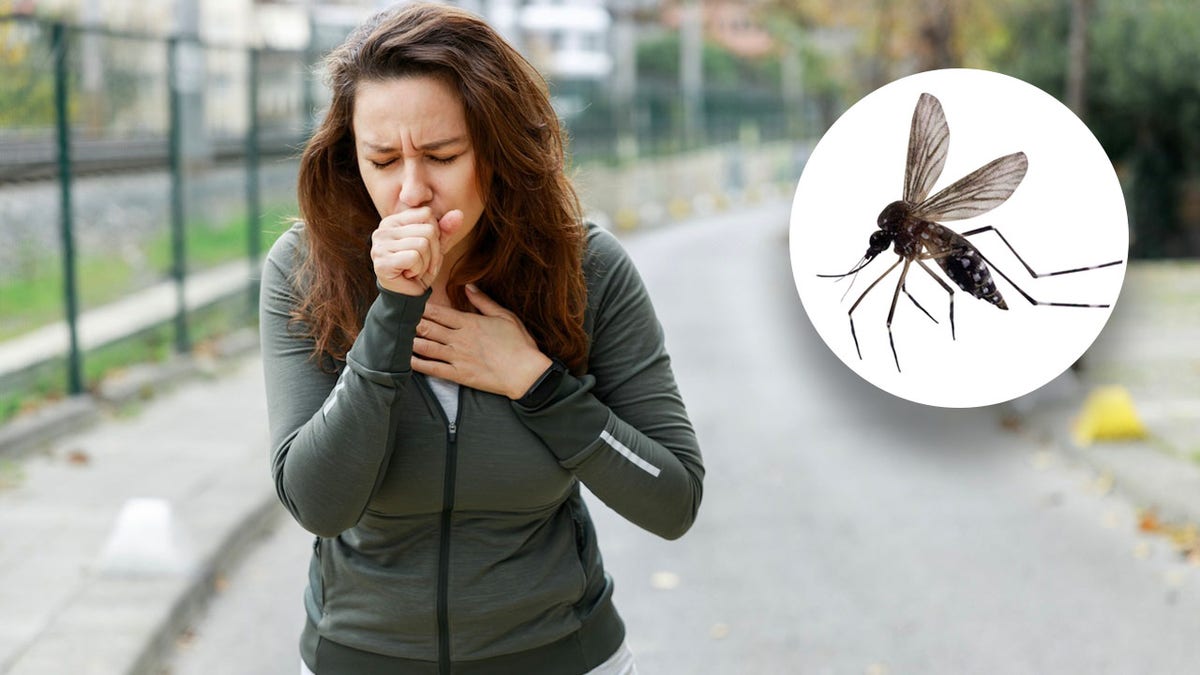
“Swallowing a bug can happen accidentally when you’re eating or drinking outside, or if a bug flies into your mouth,” the doctor told Fox News Digital. (iStock)
If the bug carries harmful bacteria or parasites, however, it could cause gastrointestinal issues or allergic reactions, according to the doctor.
The type of bug can make a difference, he said.
“Bugs like beetles or ants are less of a concern, but bugs that are known to spread diseases — such as mosquitoes — might be riskier.”
If you happen to swallow a bug, drinking some water can help wash it down, Dasgupta said.
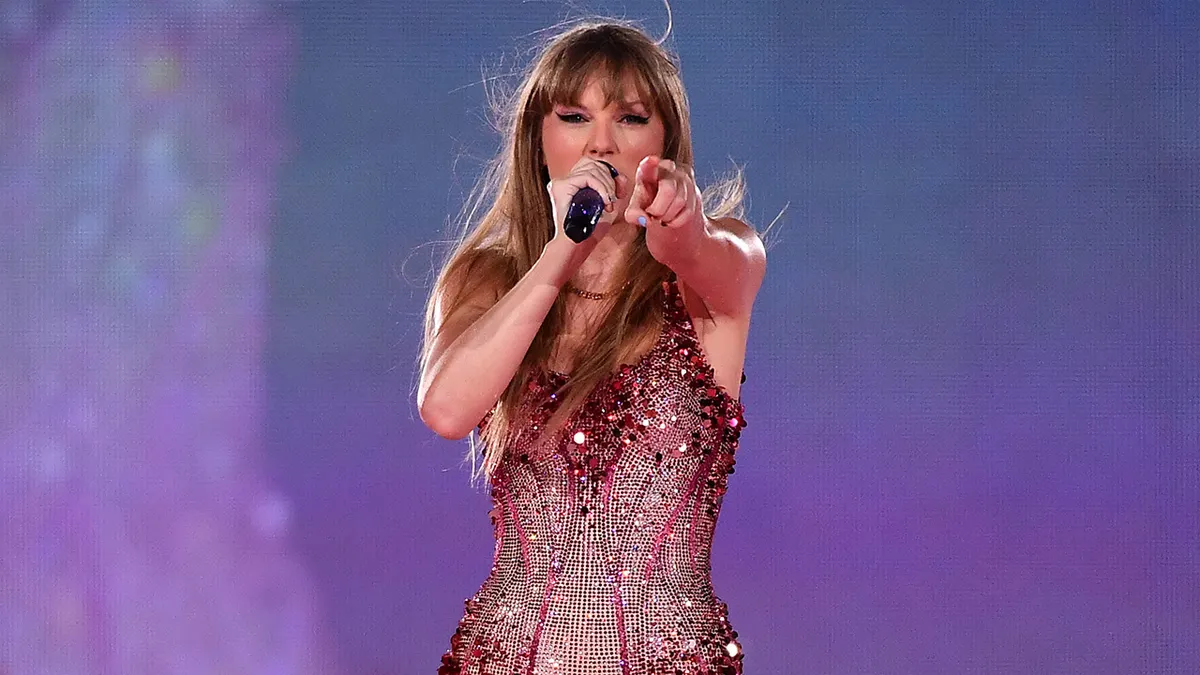
Taylor Swift has announced the accidental swallowing of bugs, mid-concert, on more than one occasion. (Marcelo Endelli/TAS23/Getty Images for TAS Rights Management)
“If you start feeling sick, like abdominal pain, vomiting or nausea, keep an eye on your symptoms,” the doctor said.
If you have severe stomach pain, ongoing vomiting, trouble breathing, or swelling, rash or itching, Dasgupta said to see a doctor.
CLICK HERE TO SIGN UP FOR OUR HEALTH NEWSLETTER
“If you know the bug could have diseases or if you have health conditions that might complicate things, it’s a good idea to get checked out to be safe,” he added.
For more Health articles, visit www.foxnews/health
Some bugs — including grasshoppers, beetles, termites, mealworms and even stink bugs — are actually considered edible in certain countries, and are prepared and eaten as part of meals, according to WebMD’s website.
Health
“I’m a Dietitian, and Here’s Why an Overly Restrictive Diet Can Backfire”

Sign Up
Create a free account to access exclusive content, play games, solve puzzles, test your pop-culture knowledge and receive special offers.
Already have an account? Login
Forgot your password?
Get back to the Sign In
Use left and right arrow keys to navigate between menu items.
Use escape to exit the menu.
-

 World1 week ago
World1 week agoOne dead after car crashes into restaurant in Paris
-

 Midwest1 week ago
Midwest1 week agoMichigan rep posts video response to Stephen Colbert's joke about his RNC speech: 'Touché'
-

 News1 week ago
News1 week agoVideo: Young Republicans on Why Their Party Isn’t Reaching Gen Z (And What They Can Do About It)
-

 Movie Reviews1 week ago
Movie Reviews1 week agoMovie Review: A new generation drives into the storm in rousing ‘Twisters’
-

 News1 week ago
News1 week agoIn Milwaukee, Black Voters Struggle to Find a Home With Either Party
-

 Politics1 week ago
Politics1 week agoFox News Politics: The Call is Coming from Inside the House
-

 News1 week ago
News1 week agoVideo: J.D. Vance Accepts Vice-Presidential Nomination
-

 World1 week ago
World1 week agoTrump to take RNC stage for first speech since assassination attempt















